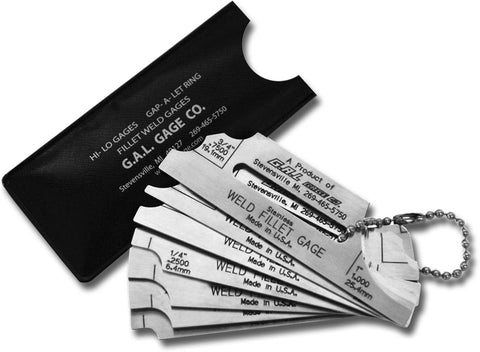The cost of welding is often misconstrued. As a welding supply company we often have companies ask for the cheapest consumables and gas; however, the bulk of the cost does not lie in the consumables. Gas and filler materials are generally only 20-25% of the cost associated with welding. The bulk of the cost is generated from labor and overhead. In other words, how much it costs to keep the lights on in the building, truck on the road, capital equipment costs, and pay your employees. This is generally 50-75% of the cost associated with welding. There are multiple ways to generate cost savings without trying to purchase less expensive consumables.
Case 1: Employer is going through hundreds of contact tips per week; company has less than 10 welders employed. They requested from us to get better contact tips.
We came in and supplied some top of the line contact tips, but the result was the same week after week. The next visit we looked at the wire they were using, it turned out to be an off-brand from somewhere overseas. Taking some calipers we measured the wire over a few inches, the wire varied over .020. This resulted in the wire getting stuck in the contact tip over and over again. They had tried to save $.15-.20/per pound on wire, but were spending hundreds of dollars on contact tips. After supplying them with more consistent wire at a few cents more per pound their problems disappeared and contact tips now last many days at a time.
Case 2: Employer can’t nail down the manufacturing cost of their product. Some operators are taking up to 3 hours longer for the same weldment and the consumable rates were all over the map.
We came in to see their processes. Although obvious to some a common oversight is weld size. The prints called for ¼ fillet welds on some fairly long seams, but we observed welds that were in the 3/8″ realm with the lower leg being up to ½ in some places. This seems like a small issue; however, larger welds result in substantially more consumables and severely decreased travel speeds.
On this single seam the difference in weld material was over 2X. That’s twice the filler metal cost, then most likely a 50% decrease in weld speed, resulting in at least 1.5X the labor and shielding gas. This is where a fillet weld gauge can come in handy and save your company time and materials.

Source: GALGAGE
Case 3: Employer has multiple welding gases. They would like to narrow down to a single gas for all their applications.
We went to see their processes. They were welding anything from sheet metal (18 gauge) to 1 ½ plate, with some stainless steel mixed in as well. For a CV GMAW process there is no single gas for this range of materials that will result in optimal weld quality. However, a 98/2 (Ar/Ox) mixture could be used for the stainless and thicker sections of mild steel. Then, for the thinner sections there are multiple mixtures that could be used are all Ar/CO2 mixtures (75/25, 80/20, 90/10), as well as straight CO2. However, the best mixture for welding stainless steels is a tri-mixture of 90% helium/ 7.5% argon/ 2.5% CO2 or similar variations.
This employer opted for the 98/2 and a 90/10 mixture for their applications. Even with an added complication to the puzzle, it is well worth it to choose the right shielding gas and electrode for the weldment.
For more information on how you can save money on your welding projects, check out bakersgas.com for the lowest prices around!
